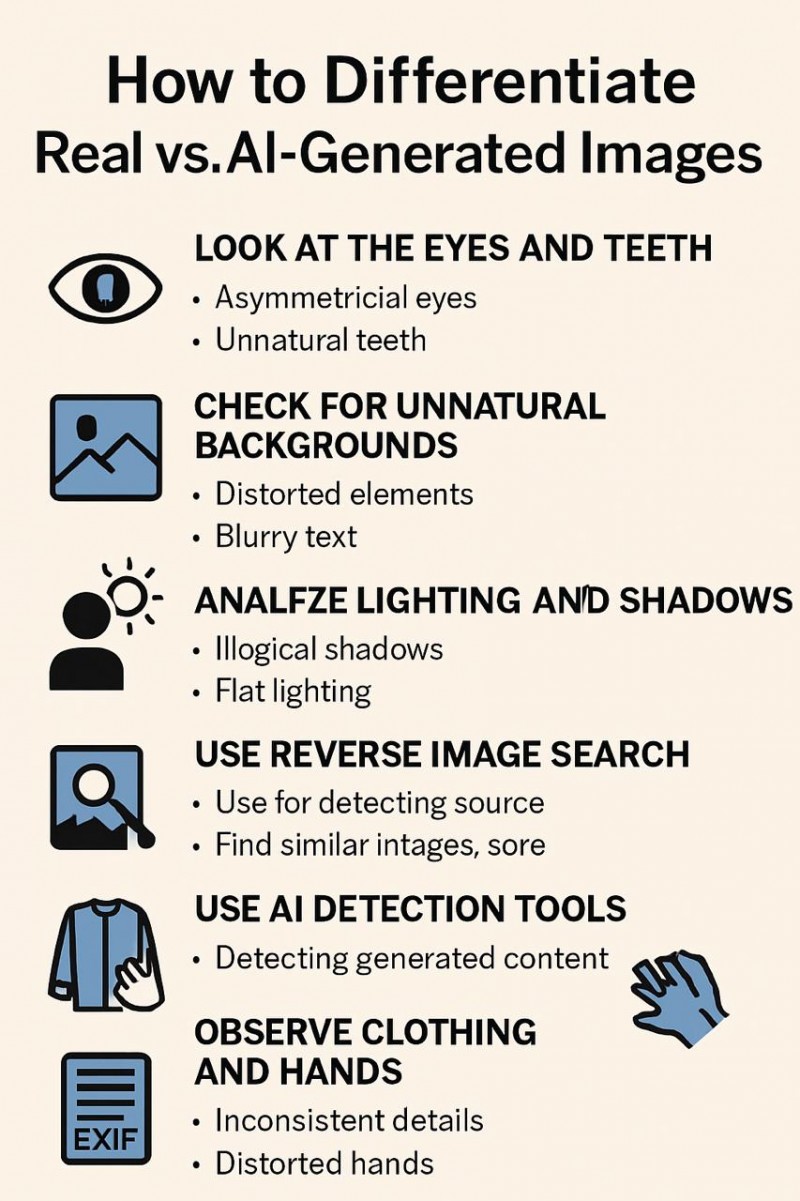
As artificial intelligence continues to evolve, AI-generated images are becoming increasingly realistic. From deepfake portraits to photorealistic art, it's becoming harder to tell what's real and what's generated by a machine. Whether you're a casual social media user, a content creator, or a digital security enthusiast, knowing how to spot AI-generated images is becoming an essential skill.
Here are some practical ways to differentiate real images from AI-generated ones:
---
1. Look at the Eyes and Teeth
AI still struggles to perfectly replicate human facial features. Watch out for:
Asymmetrical eyes – one eye may be slightly off-center or a different size.
Strange reflections in the eyes – such as mismatched lighting or missing catchlights.
Unnatural teeth – inconsistent number, spacing, or blending into lips unnaturally.
These small but telling flaws are often signs of image synthesis.
---
2. Check for Unnatural Backgrounds
AI image generators often produce:
Distorted or melted backgrounds (especially in complex scenes).
Inconsistent architecture or objects – doors with no handles, extra fingers, or floating limbs.
Blurry text or signs – AI has trouble generating readable and realistic text in images.
Zoom in and observe – inconsistencies here are red flags.
---
3. Analyze Lighting and Shadows
In real photos, lighting is consistent across subjects and objects. AI images often have:
Illogical shadow directions – shadows may not match the light source.
Inconsistent brightness on faces vs. objects nearby.
Flat or unnatural lighting that makes subjects look pasted into the scene.
Lighting mismatches are a strong indicator of image manipulation or generation.
---
4. Use Reverse Image Search
If you’re unsure about the authenticity of an image:
Use Google Reverse Image Search or TinEye.
If no exact match is found but the style seems familiar, it may be AI-generated.
AI images often don’t have a source or context – just random outputs.
This technique is helpful when verifying images circulating on social media or news sites.
---
5. Use AI-Detection Tools
Several free and paid tools can analyze images and detect signs of AI generation:
AI or Not – helps detect if an image was made by AI.
Hive Moderation – offers content analysis including AI detection.
Deepware Scanner – useful for identifying deepfake videos and faces.
While not foolproof, these tools are improving rapidly and provide an extra layer of verification.
---
6. Observe Clothing and Hands
AI struggles with small but complex details:
Clothing – inconsistent patterns, strange folds, or blurred accessories.
Hands – extra fingers, fused fingers, or incorrect positioning.
Jewelry and glasses – often distorted, unclear, or floating.
Zoom in on these areas for clues.
---
7. Check Image Metadata (EXIF Data)
Every photo taken by a real camera or smartphone contains metadata (like device type, date, and settings). Use tools like:
ExifTool or FotoForensics
Missing or stripped metadata is common in AI-generated images.
However, beware that metadata can be removed or edited, so this isn’t always a definitive sign.
---
Final Thoughts
AI-generated images are getting harder to detect — and fast. But with a sharp eye and a few digital tools, you can often spot the fakes. As AI-generated content becomes more common, awareness and critical thinking are your best defenses.
Want to test your skills? Try comparing a few real vs. AI images side-by-side and see how many you can catch!
---
Stay informed, stay alert, and always double-check before you believe or share an image.



